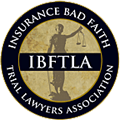What Are the Three Types of Defective Product Liability Claims?
Product liability is an area of law that deals with defective and dangerous products. When flawed products get into the hands of consumers, they can cause serious and fatal injuries and illnesses. Injuries connected to defective products can include burns, lacerations, broken bones and organ damage. In these cases, victims have the right to seek financial compensation from the manufacturer or distributor of the product. Most types of defective product liability claims fall into one of three categories.
Design Flaw
Some defective products that cause customer injuries have inherently unsafe designs. Even if the company correctly manufactures and markets this product, it could still cause an injury through an issue with its design, materials or structure. A product design that puts customer safety at risk is a defect. Examples are a tea kettle made out of a material that cracks when it gets too hot or a chair that collapses when someone puts weight on it. A design flaw that causes an injury could lead to manufacturer liability.
Manufacturing Mistake
Some products have safe designs but are defective due to errors during the manufacturing process. Human error or a machine malfunction during the production of an item could make it unreasonably dangerous for consumers to use. Workers at a manufacturing facility or distribution plant could make many mistakes that lead to defective, dangerous or contaminated products.
- Lack of communication in the manufacturing facility
- Unsafe premises
- Poor business protocols
- Low-quality materials
- Poorly trained employees
- Confusing or unclear directions
- Improper material storage or labeling
- Lack of product inspections
- Lack of quality checks
- Broken federal safety rules
Many manufacturing companies do not notice errors in production or assembly until it is too late and the defective product has already caused an injury. In some cases, however, a manufacturing company had reason to know about the problem but intentionally did not issue a recall in an attempt to save money. Either way, you could be eligible for financial compensation from the company for a manufacturing error.
Marketing Error
The third type of product defect is in the item’s marketing or instructions. Product manufacturers have a legal duty to inform customers of foreseeable risks, such as the risk of electrocution when submerging an electronic device in water. Failing to place risks on the packaging, in the marketing materials or in the instruction manual of an item could be a product defect if it threatens the health or safety of consumers. A children’s toy that is not suitable for infants, for example, may be defective if it does not have a warning label with an age minimum.
Elements of a California Product Liability Claim
If the product that caused your injury contains one of these three types of defects, you most likely have a strict product liability claim. Strict liability means the defendant will automatically bear responsibility for the plaintiff’s losses without the plaintiff having to prove fault or negligence. Defective product suits often involve the doctrine of strict liability to protect consumers. Rather than making consumers prove the negligence of a large and powerful manufacturing company, the courts allow recovery if the plaintiff can prove the product contained a defect and this defect caused an injury.
If you cannot base your claim on the theory of strict liability, you may still be able to obtain compensation based on negligence or a breach of warranty. A negligence suit against a product manufacturer will require you or an attorney to prove the defendant guilty of a breach of the duty of care, such as failing to conduct safety tests before releasing a product. A suit based on a breach of warranty asserts the manufacturer failed to fulfill a promise or guarantee it made to consumers, such as regarding the product’s safety. A Sacramento product liability lawyer could help you with the elements of your specific claim.

















